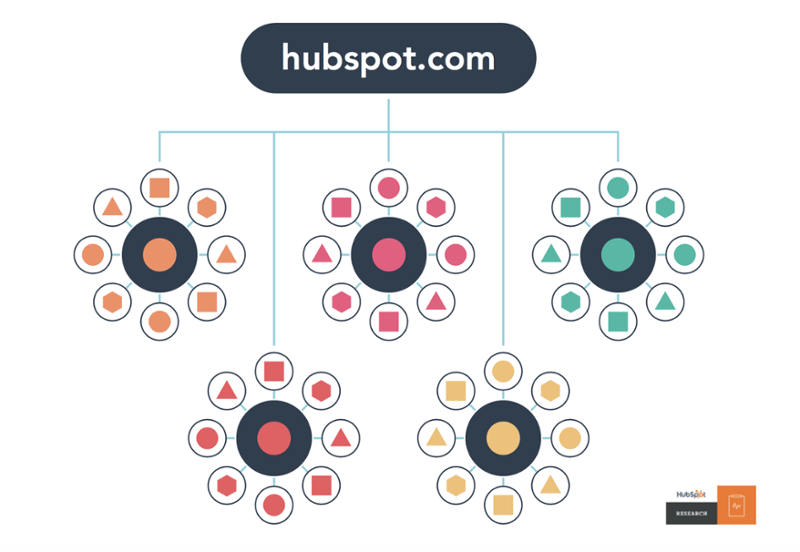
Get weekly
HubSpot updates
So, you’ve written a great blog, and the traffic is pouring in. Everyone seems to love the great content you’ve written, but you aren’t getting any high quality leads out of it. How could this happen?To address this, you need to consider who your target audience is, and to do that, you need to examine your buyer personas.
Buyer personas are (as stated by HubSpot) fictionalised, generalised representations of your ideal customers. They can help you write the content by giving you a better idea of the challenges your customers face in their role, and what their needs are, meaning that you can tailor your content to address questions they might have.
Developing a buyer persona should be the first stage of your blogging strategy, and there are a number of resources you can use to do it, such as our guide to identifying your buyer personas.
Having a buyer persona will give you an insight into the type of questions you think your potential customers would be asking. Once you have those, the next stage is to delve a little deeper into those queries.
Download a Free Buyer Persona Template
Keyword research is the next step in ensuring you’re creating the right sort of content. It allows you to check out the number of searches that are being made for a particular keyword, giving you a better indication of exactly which terms you should be using within your blogs, and which keywords should be present in the title of your article.
To do this, there are several tools available. For basic keyword research, the Keyword Planner within Google Ads can give you some basic information, including the search volume for the keyword and variations of it. It can be found here. This tool is free to use, however you do need a Google Ads account.

An alternative tool for your keyword research is Moz’s Keyword Explorer. This tool gives you a variety of information about the keyword you enter, including search volumes, competition, and which other websites are ranking for that term, as well as other variations and similar terms you could use.
Answer The Public is another Keyword research tool, which provides questions related to the keyword that you entered which people have searched for in Google. This allows you to see if there are any commonly asked questions that you could look to answer on your blog.
Using these tools in combination, you can get a list of topics, and then create blog titles that properly reflect what your ideal customers are searching for. Remember to create blogs for each stage of the buyer’s journey - you want to be targeting not just potential customers that are only just becoming aware of their problem, but also those considering how to solve it and those deciding which solution to use.
Once you have your list of tailor-made titles, the next stage is to go and write up your content - however there’s still more to do once you’ve created it. Simply ‘setting and forgetting’ won’t be enough to get your blog in front of the right audience. You’ll need to optimise it for search, and promote it on social channels as well.
Basic SEO (Search Engine Optimisation) for blogs is simple. Make sure to include the keyword you’d like the blog to be ranking for in the page title, the H1 and within the body text. This should be done naturally - not stuffing the text full of the keyword you want to rank for. In general, this is fairly simple - you’ll be naturally mentioning the keyword in the text of your blog as you write about it. Don’t forget to optimise the meta description as well - this small block of text appears below the page title, and provides a small description of the page - optimising this to make it a more appealing click-through is a good idea!
Secondly, make sure your blog is adapted to perform well on mobile devices. Increasing numbers of users come from mobile devices, and they are consuming more blog content on them as well. If your blog doesn’t perform well, it won’t be read - and in addition, it also won’t rank well.

Also, consider promoting your blog on social media sites, such as Facebook and Twitter. Paid advertising on these sites will generate more traffic than simply posting organically, but this comes at a cost. Where you post and how you promote it will again depend on your buyer personas - promote your blog on the places where they go more heavily. If your buyer persona uses certain forums, consider promoting your blog there as well (if the forum allows this).
Having a CTA (Call-To-Action) is also important - this is how you get blog readers to take an action you want. Page views of your blog are good, but without readers taking the actions you want them to take (be that giving you their contact details, buying a product, or downloading an asset), then your blog simply isn’t producing any business value.
As such, you should ensure your blog includes a CTA of some variety. Ideally, it should be matched to the stage of the buyer’s journey that the blog is relevant to, so that you get the right details for that stage.

Finally, continue to monitor your blog - you can do this with Google Analytics to get high level data - such as the number of page views, useful for assessing popularity, the channels from which your traffic is coming from - great for seeing which marketing channels are performing the best, and other metrics such as bounce rate and average time on page - useful for seeing if users are engaging with the content on your page or not.
For a deeper level of user interaction tracking, tools like hotjar can be used - allowing you to create heat maps that show where users have clicked, how far they have scrolled down the page, and add pop-in forms to gather more feedback. This can be very useful in further optimising your blogs by allowing you to decide where to place CTA’s, and to gather more information about how users interact with the content.

